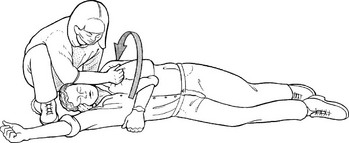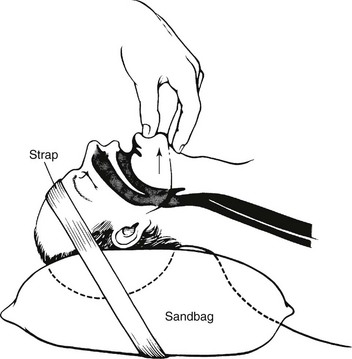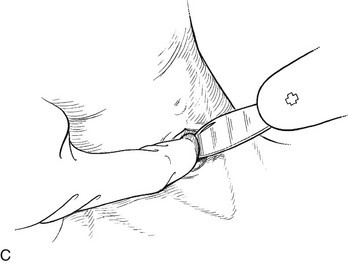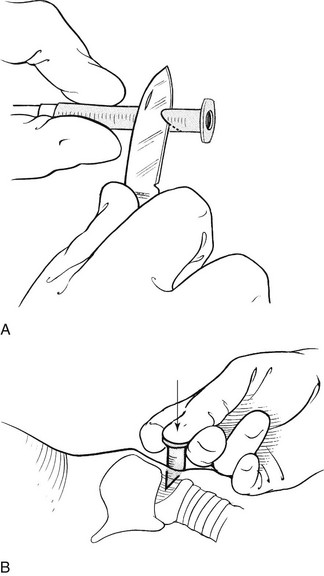Trauma Emergencies
Assessment and Stabilization
Establishing Priorities
There are three immediate priorities in managing wilderness trauma:
1. Self control: It is normal to feel anxious when confronted with an injured patient. However, anxiety and fear can be transmitted to other members of the team and distract from team and patient safety goals.
2. Control the situation: The first priority is ensuring the safety of your team and patient(s). Injury to additional persons can exponentially complicate the scenario and require more resources. Expeditious evacuation of the patient requires that all expedition members function at maximal efficiency; even minor injuries to other members of the group can jeopardize an evacuation. Although a medical professional among the team may be the best qualified to perform patient assessment and care, the overall group leader needs to take into consideration team resources, safety, weather, travel plans, and the overall coordination of evacuation.
3. Obtain an overview of the situation: The team leader needs to assess if the group has enough food, water, and shelter to support itself during the evacuation. If the patient requires treatment in the field and/or if weather does not permit evacuation, then shelter needs to be arranged to protect against the elements until everything is ready for patient evacuation. Efforts should be made to contact necessary rescuers and agencies, if possible, or consideration made for sending part of the team to request assistance.
Basic Principles of Wilderness Trauma Management
1. Primary survey: Rapidly identify immediate life threats to the patient by assessing “ABCDE”—airway; breathing; circulation; disability and neurologic status, including possible cervical spine injury; and environmental exposure.
2. Resuscitation: Stabilize any conditions discovered during the primary survey.
3. Secondary survey: Complete a basic medical history and head-to-toe examination of the patient to discover all injuries.
4. Definitive plan: Create a treatment and evacuation plan for the patient.
5. Packaging and transfer preparation: Protect the patient from environmental exposure, and evacuate the patient or prepare for rescue assistance.
Primary Survey
Assess the Scene
1. Ensure the safety of noninjured members of the party.
2. Assess the scene for further hazards such as falling rocks, avalanche, and dangerous animals before rendering first-aid care.
3. Avoid approaching the patient from directly above if falling rock or a snowslide is possible.
4. Do not allow your sense of urgency to transform an accident into a risky and foolish rescue attempt.
Airway
1. If the patient is unresponsive, immediately determine if he or she is breathing.
a. If the patient’s position prevents adequate assessment of the airway, roll the patient onto the back as a single unit, supporting the head and neck (Fig. 12-1).

FIGURE 12-1 One-person roll.
b. Place your ear and cheek close to the patient’s mouth and nose to detect air movement while looking for movement of the chest and abdomen (Fig. 12-2). In cold weather, look for a vapor cloud and feel for warm air movement.
2. If no movement of air is detected, clean out the mouth with your fingers and use the chin lift (Fig. 12-3) or jaw thrust technique to open the airway.
a. Perform the jaw thrust by kneeling down with your knees on either side of the patient’s head, placing your hands on either side of the patient’s mandible and pushing the base of the jaw up and forward (Fig. 12-4).

FIGURE 12-4 Jaw thrust.
b. Note that the jaw thrust and chin lift techniques are labor intensive and occupy your hands. If you are alone and the situation is critical, you can establish a temporary airway by pinning the anterior aspect of the patient’s tongue to the lower lip with a safety pin (see Fig. 10-5), noting that this can result in significant bleeding and is perceived by some observers as a maneuver of last resort. An alternative to puncturing the lower lip is to pass a string or shoelace through the safety pin and hold traction on the tongue by securing the other end to the patient’s shirt button or jacket zipper (see Fig. 10-6).
3. Cricothyroidotomy (cricothyrotomy)—the establishment of an opening in the cricothyroid membrane—is indicated to relieve life-threatening upper airway obstruction when a patient cannot be ventilated effectively through the mouth or nose and endotracheal intubation is not feasible (also see Chapter 10).
a. Locate the cricothyroid membrane by palpating the patient’s neck, starting at the top. The first and largest prominence felt will be the thyroid cartilage (“Adam’s apple”); the second felt is the cricoid cartilage (below the thyroid cartilage). The small space between these two, noted by a small depression, is the cricothyroid membrane (Fig. 12-5, A).
b. With the patient lying on his or her back, cleanse the neck around the cricothyroid membrane with an antiseptic.
c. Put on protective gloves. Make a vertical 2.5-cm (1-inch) incision through the skin with a knife over the membrane (go a little bit above and below the membrane) while using the fingers of your other hand to pry the skin edges apart. Anticipate bleeding from the wound (Fig. 12-5, B and C).
d. After the skin is incised, puncture the membrane by stabbing it with your knife or other pointed object.
e. Stabilize the larynx between the fingers of one hand, and insert an improvised cricothyrotomy tube (Box 12-1) through the membrane with your other hand while aiming caudally (toward the buttocks). Secure the object in place with tape. You can also insert the improvised tube through the tape before placing it through the cricothyroid membrane.











